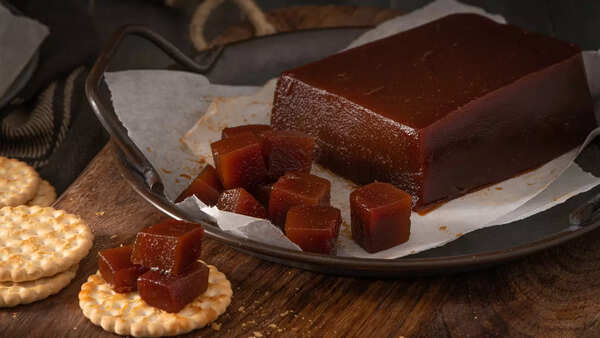Before we dig dip into exploring their differences, there is one similarity between them that you should know about. Both Marmalade and Marmelada have their roots in the art of preserving fruit. This ancient practice dates back to civilizations that sought to extend the shelf life of fruits and enjoy their flavours throughout the year.
What is Marmalade and how it is made?
Marmalade is a citrus fruit preserve that traditionally features oranges, though lemons, limes, and grapefruits are also used. It is primarily prepared with citrus fruits, sugar, and water. For making Marmalade, citrus fruits are sliced, and the peel, including its zest, is often incorporated for its distinctive bitterness. The fruit is then simmered with sugar and water until it reaches the desired consistency, typically achieving a chunky, gel-like texture. The bitter-sweet contrast and the presence of peel make marmalade known for its bold, zesty flavour. Marmalade is a popular accompaniment to breakfast and tea in British and Irish cuisines. Its tangy, slightly bitter notes can elevate toast, scones, and even glazes for meats like ham.

All you need to know about Marmelada
While we talked about Marmalade, ‘Marmelada’, on the other hand, is a Portuguese fruit preserve primarily made from quinces. Quinces are peeled, cored, and simmered with sugar until they turn into a thick, amber-coloured paste. The process of making Marmelada involves slow cooking the quince puree with sugar, which gradually transforms it into a dense, sweet spread. Unlike Marmalade, Marmelada lacks the tartness of citrus fruits but offers a unique floral aroma and a subtle grainy texture. It is deeply ingrained in Portuguese culinary traditions and is often served as a dessert or snack, sliced into squares or wedges. Pairing it with cheese, particularly sheep’s milk cheese, is a cherished tradition in Portugal.
ALSO READ: Difference between Korean and Chinese cuisines
The key differences between Marmalade and Marmelada
While Marmalade uses citrus fruits; Marmelada on the other hand is prepared with quinces. When it comes to the texture, Marmalade has a chunky, gel-like texture with the presence of citrus peel, while Marmelada has a dense and smooth consistency. In terms of flavours, Marmalade is known for its citrusy, tart, and slightly bitter flavour; whereas Marmelada offers a sweet, floral taste with subtle graininess. When it comes to the culinary uses, Marmalade is a quite popular spread in British and Irish breakfasts, while Marmelada is a Portuguese dessert or cheese accompaniment.
Which one of these two have you tried? Do let us know in the comment box.

